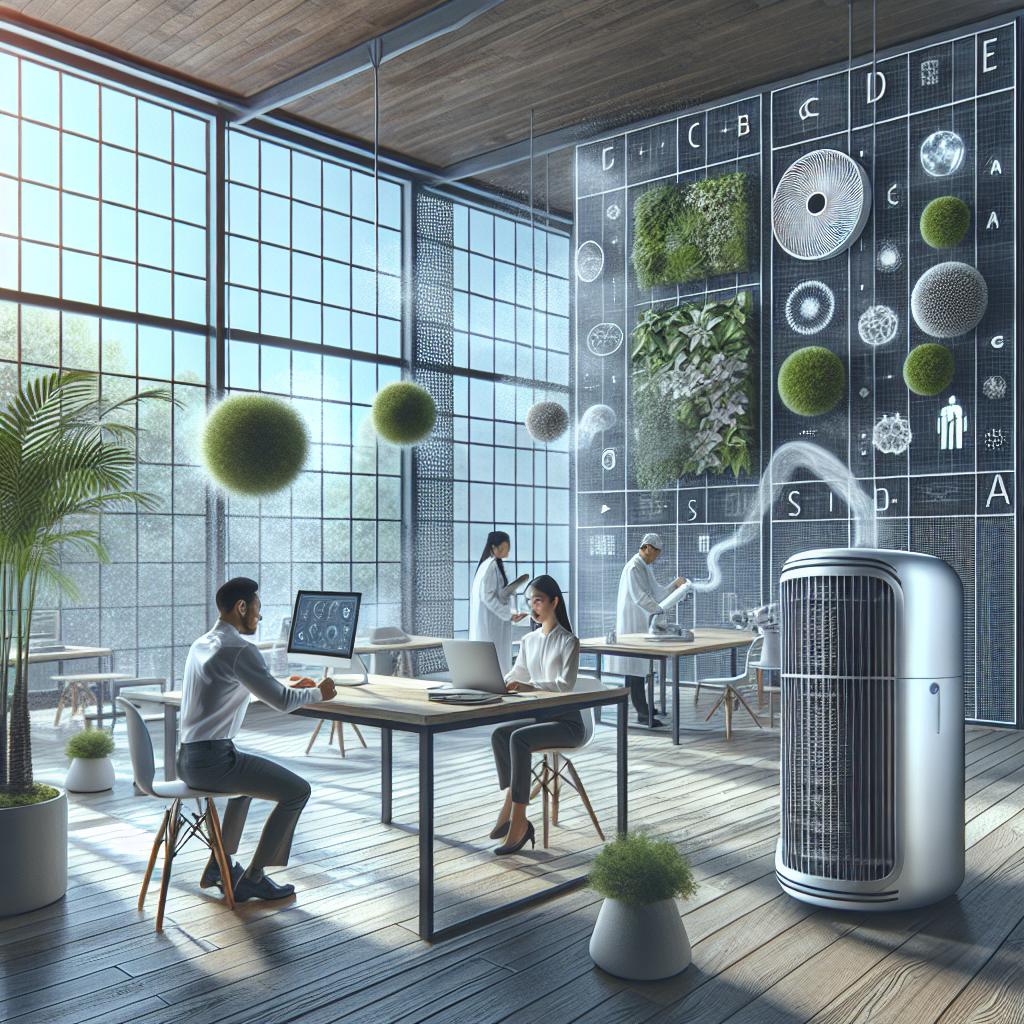Introduction
In the bustling world of commercial spaces, where comfort meets functionality, the design of an HVAC (Heating, Ventilation, and Air Conditioning) system holds the power to transform environments.Far beyond mere temperature control, an efficiently crafted HVAC system is the silent architect of productivity, health, and sustainability within offices, retail outlets, and industrial settings. As businesses strive to create welcoming atmospheres that enhance employee performance and customer satisfaction, understanding the best practices in HVAC design becomes essential. This article delves into the intricate art and science of HVAC systems, exploring key considerations, innovative technologies, and proven strategies that pave the way for optimal performance in any commercial space. Join us as we uncover the principles that not only ensure comfort but also contribute to energy efficiency and reduced operational costs—elements that are increasingly vital in today’s competitive landscape.
Understanding the Unique Demands of Commercial Environments
Commercial environments, such as offices, retail stores, and restaurants, have specific HVAC needs that differ substantially from those of residential spaces. High foot traffic, varying occupancy levels, and diverse activities contribute to fluctuating thermal loads that require a tailored approach. Efficiency is key; thus, HVAC systems must seamlessly integrate with the overall architecture while ensuring optimal comfort for occupants.The design should consider factors like:
- Peak Load analysis: Evaluate the maximum cooling and heating loads needed during the busiest times.
- Zoning: Create separate temperature zones to cater to different areas, enhancing comfort and efficiency.
- Air quality control: Incorporate advanced filtration and ventilation strategies to maintain a healthy indoor environment.
Moreover, the selection of HVAC equipment plays a pivotal role in meeting the unique demands of these spaces. Energy-efficient systems not only lower operational costs but also contribute to sustainability goals,appealing to a growing number of eco-conscious consumers. an effective HVAC design strategy might include:
| System Type | benefits |
|---|---|
| Variable Refrigerant Flow (VRF) | Flexible zoning, energy-efficient, quick installation |
| Chilled Beams | Low energy consumption, reduced noise levels |
| Heat Pumps | Dual functionality, cost-effective heating and cooling |
Optimizing Energy Efficiency and Sustainability in HVAC design
In today’s commercial landscape, enhancing energy efficiency while maintaining optimal comfort within HVAC systems is paramount. Designers should focus on utilizing high-efficiency equipment that not only minimizes energy consumption but also ensures robust performance. Key components to consider include:
- Variable Refrigerant Flow (VRF) Systems: These systems allow for precise temperature control,adjusting the flow of refrigerant based on the specific needs of each zone.
- Smart Thermostats: Integrating advanced thermostats equips building managers with real-time data, enabling informed decisions that can drastically cut energy usage.
- Energy Recovery Ventilation (ERV): Implementing ERV systems captures waste energy from exhaust air, utilizing it to precondition incoming fresh air.
To promote sustainability, it’s essential for designers to adopt a holistic approach that considers the entire lifecycle of the HVAC system. This includes selecting materials and technologies that foster renewable energy integration and reduce the carbon footprint. Effective strategies involve:
- Green Roofs and Walls: Incorporating vegetation not only insulates buildings but also helps in rainwater management and improves air quality.
- Automated Control Systems: These systems optimize HVAC operation by adjusting schedules and settings based on occupancy patterns to minimize energy waste.
- Regular Maintenance Plans: A proactive approach to upkeep ensures systems operate efficiently, prolonging lifespan and reducing the need for premature replacements.

Enhancing Indoor air Quality for Healthier Workspaces
To promote a healthier workplace, attention to HVAC design is essential. A well-crafted HVAC system not only ensures temperature control but also significantly impacts indoor air quality (IAQ). Key elements to consider include ventilation rates, filter efficiency, and temperature settings. Implementing effective filtration systems, such as HEPA filters, can capture airborne particles, allergens, and pathogens, thereby improving the overall health of employees. Additionally, incorporating sufficient outdoor air exchange can dilute indoor pollutants, reducing the likelihood of sick Building Syndrome and increasing productivity.
it’s vital to focus on zoning and control strategies when designing the HVAC system. This allows for tailored climate settings in different areas of the workspace. Below are best practices to enhance IAQ through HVAC design:
- Regular Maintenance: Schedule frequent checks and replacements of filters to ensure maximum efficiency.
- Humidity Control: Maintain humidity levels between 30% and 50% to discourage mold growth.
- Use of Natural Ventilation: Whenever feasible, integrate windows or vents that enable fresh air circulation.
- Monitor Indoor Air Quality: Utilize sensors to track CO2 levels and particulate matter, making adjustments as necessary.

Integrating Smart Technology for Intelligent Climate Control
Incorporating advanced technologies into HVAC design not only enhances comfort levels but also significantly improves energy efficiency. Smart thermostats and sensors allow for real-time monitoring and adaptive control of indoor climates, ensuring that energy is used only when necessary. Consider implementing the following features for maximizing the benefits of intelligent climate control:
- Zone control Systems: Tailor temperatures in different areas based on usage and occupancy.
- Predictive analytics: Utilize historical data to anticipate heating or cooling needs, adjusting systems preemptively.
- Integrated Air quality Sensors: Monitor and adjust ventilation rates to maintain healthy indoor air quality.
to effectively manage energy consumption, it’s crucial to establish a clear integration plan for all smart components within the HVAC system. It’s advisable to collaborate with a certified professional who specializes in smart technology to create a seamless design. A well-structured deployment plan can include the following:
| Component | Functionality | benefits |
|---|---|---|
| Smart Thermostats | Remote temperature control | Energy savings |
| Humidity Sensors | Measure and adjust moisture levels | Enhanced comfort |
| Energy Monitoring Systems | Track energy consumption patterns | Identify savings opportunities |
Q&A
Q&A: Best Practices for Designing the HVAC system in Commercial spaces
Q1: Why is HVAC design crucial in commercial spaces?
A1: HVAC design is pivotal in commercial spaces as it directly affects occupant comfort, operational efficiency, and energy consumption. A well-designed system can enhance productivity, improve indoor air quality, and reduce utility costs, leading to a healthier environment for employees and customers alike.
Q2: What are some key factors to consider when designing an HVAC system for a commercial building?
A2: Several factors must be taken into account, including the building’s size and layout, it’s intended use, occupancy patterns, local climate, and energy regulations. Additionally, understanding the heat load generated by equipment, lighting, and occupants helps in selecting appropriately sized units that ensure optimal temperature and humidity control.
Q3: how does zoning play a role in HVAC design for commercial spaces?
A3: Zoning is fundamental in HVAC design as it allows for tailored temperature control in different areas of a building, accommodating varying needs. For instance, conference rooms may require more cooling than storage spaces. Implementing a zoned system boosts comfort and can create important energy savings by avoiding needless heating or cooling in unoccupied areas.
Q4: What about energy efficiency? How can HVAC systems be designed to minimize energy use?
A4: Prioritizing energy efficiency begins with selecting high-efficiency equipment, such as units with better SEER (Seasonal Energy Efficiency Ratio) ratings.Incorporating modern controls, predictive maintenance schedules, and smart technology can optimize energy use. Furthermore, considering renewable energy sources like solar power or utilizing energy recovery ventilators (ERVs) can significantly reduce overall energy consumption.
Q5: How crucial is air quality in HVAC design?
A5: Indoor air quality is essential to the health and well-being of occupants. Effective HVAC systems should incorporate proper ventilation, filtration, and humidity control. Regular maintenance, the addition of MERV-13 filters, and the use of UV light systems can definitely help eliminate pollutants and allergens from the air, creating a safer, more pleasant environment.
Q6: What role does maintenance play in the efficiency of an HVAC system?
A6: Maintenance is crucial for sustaining the performance and efficiency of HVAC systems. Regular inspections, cleaning, and prompt repairs can prevent breakdowns, enhance energy efficiency, and extend equipment lifespan. Developing a proactive maintenance schedule not only saves costs in the long run but ensures comfort and safety throughout the year.
Q7: how can technology enhance HVAC system design in commercial spaces?
A7: Advanced technology brings innovation to HVAC design through tools like building Facts Modeling (BIM), which aids in visualizing system performance before implementation. Smart thermostats,IoT sensors,and building automation systems facilitate real-time monitoring and adjustments,contributing to optimized energy use and occupant comfort.
Q8: Are there any regulations or standards that HVAC designers should be aware of?
A8: Yes, HVAC designers should stay informed on local and national codes, such as ASHRAE standards, as well as local building codes that dictate energy efficiency and safety criteria. Compliance with these regulations not only ensures legal adherence but also promotes responsible environmental practices and occupant safety.
Q9: What are some common pitfalls to avoid in HVAC system design?
A9: Common pitfalls include underestimating the importance of a detailed load calculation, neglecting maintenance considerations, and overlooking the potential of energy recovery options. Additionally, failing to involve all stakeholders—such as architects, facility managers, and occupants—during the design phase can lead to a mismatch between system performance and user expectations.
Q10: How can businesses assess the effectiveness of their HVAC system post-installation?
A10: To assess system effectiveness, businesses should monitor energy consumption, maintain records of comfort surveys from occupants, and evaluate air quality metrics. Regular analysis of these parameters can identify areas for improvement and ensure the HVAC system continuously meets the needs of the commercial space.
To Wrap it Up
the journey to designing an efficient and effective HVAC system for commercial spaces is one anchored in thoughtful planning and a clear understanding of both environmental and occupant needs. By embracing best practices—from conducting comprehensive load calculations to integrating advanced technology and promoting sustainability—you can create a climate-controlled environment that not only prioritizes comfort but also enhances productivity and well-being.
Remember, the heart of any commercial space lies in its ability to adapt to the unique dynamics of its users, and the HVAC system plays a pivotal role in achieving this balance. As you move forward with your design, let innovation and adaptability guide your choices, ensuring that the spaces you create today will thrive in the future. By investing time and resources into these best practices, you’re not just designing a system; you’re fostering a healthier, more efficient workspace that can elevate the entire experience for those who inhabit it. Happy designing!

